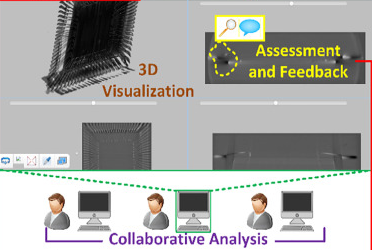A novel crowdsourcing platform for microelectronics counterfeit defect detection

Disguising non-authentic electronic parts as otherwise, so called as electronic counterfeiting, continues to inflict significant damages on government, industry and society. This calls for finding effective ways to identify counterfeits. The current approaches involve acquisition of 2D and 3D images of the alleged part using a spectrum of microscopy tools, followed by having them assessed by a group of subject matter experts. This approach, nevertheless, entails two important shortcomings. First, the intensive computations needed for visualization, processing and analysis of the large microscopy data is not affordable by all. Second, due to lack of an objective measure for most classes of counterfeit, many defects are overlooked and even in some cases, they are falsely identified. Our proposed solution provides a collaborative platform to acquire assessments from a larger group of experts, towards forming a collective insight and minimizing overlooking of defects. Our first-of-its-kind web-based crowdsourcing platform can be leveraged for 3D visualization of microscopy data without imposing any computational load on the users, as well as collaborative analysis by collecting information from each user. Further, the collected information is compiled in a data bank, which serves as a valuable source for developing quantified measures and for training automated defect classification algorithms.